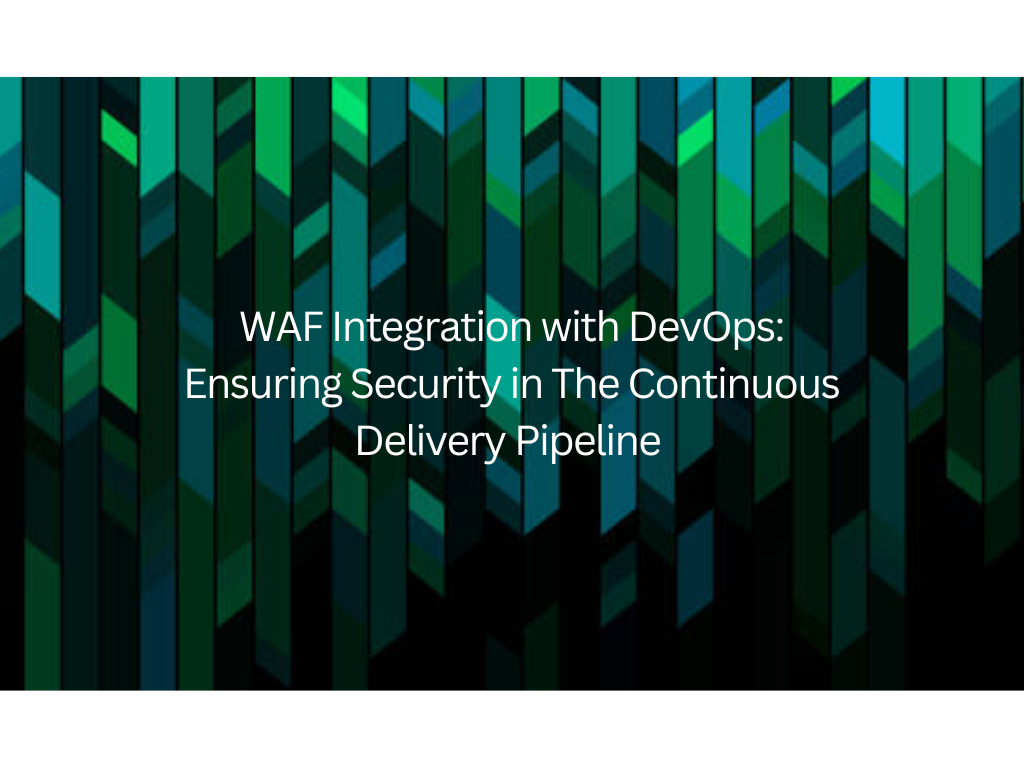As more and more organizations adopt DevOps practices to streamline their software development and delivery, the need for robust security measures becomes increasingly important. Web application firewalls (WAFs) can play a crucial role in securing web applications but integrating them into a DevOps workflow can be a challenge. In this article, we will explore the benefits of integrating WAFs with DevOps and some best practices for doing so.
Benefits of WAF Integration with DevOps
WAFs are designed to protect web applications from a variety of attacks, including SQL injection, cross-site scripting, and other types of malicious activity. Integrating a WAF with a DevOps workflow can provide several benefits, including:
- Enhanced Security: WAFs can provide an additional layer of security for web applications. By integrating them with the DevOps workflow, security testing can be automated and integrated into the continuous delivery pipeline. This means that vulnerabilities can be detected and fixed earlier in the development cycle, reducing the risk of a successful attack.
- Improved Compliance: Many organizations are subject to regulatory compliance requirements, such as the Payment Card Industry Data Security Standard (PCI DSS) or the General Data Protection Regulation (GDPR). WAFs can help organizations meet these requirements by providing additional security controls for web applications. By integrating WAFs into the DevOps workflow, compliance testing can be automated and integrated into the continuous delivery pipeline.
- Faster Time-to-Market: With DevOps practices, organizations can deliver software updates more quickly than with traditional development models. By integrating WAFs into the DevOps workflow, security testing can be automated and integrated into the continuous delivery pipeline. This means that security testing can be done faster and more efficiently, reducing the time it takes to get software updates into production.
Best Practices for WAF Integration with DevOps
Integrating WAFs into a DevOps workflow can be challenging, but there are several best practices that organizations can follow to ensure success:
- Include Security Requirements in the Development Process: Security requirements should be included in the development process from the beginning. This means that security testing should be part of the continuous integration process and that security controls should be implemented early in the development cycle.
- Use Infrastructure-as-Code: Infrastructure-as-Code (IaC) is a DevOps practice that involves writing scripts or configuration files to automate the deployment of infrastructure. By using IaC, organizations can ensure that security controls, including WAFs, are deployed consistently across all environments.
- Automated WAF Configuration: WAF configuration can be complex and time-consuming. By automating the configuration process, organizations can ensure that WAF rules are consistent across all environments and that changes are tracked and audited.
- Test WAF Rules: WAF rules should be tested as part of the continuous integration process to ensure that they are effective and that they do not block legitimate traffic.
- Monitor WAF Performance: WAFs can have an impact on application performance, so it is important to monitor their performance to ensure that they are not causing delays or other issues.
- Implement a Feedback Loop: Feedback is an essential component of the DevOps process. By implementing a feedback loop, organizations can identify issues with WAFs and other security controls and make improvements to the process over time.
Conclusion
Web application firewalls can provide an additional layer of security for web applications but integrating them into a DevOps workflow can be challenging. By following best practices, including security requirements in the development process, using infrastructure-as-code, automating WAF configuration, testing WAF rules, monitoring WAF performance, and implementing a feedback loop, organizations can ensure that their web applications are secure throughout the continuous delivery pipeline. With the right tools and processes in place, Dev Ops teams can maintain high levels of security without sacrificing the speed and agility that comes with DevOps practices.




